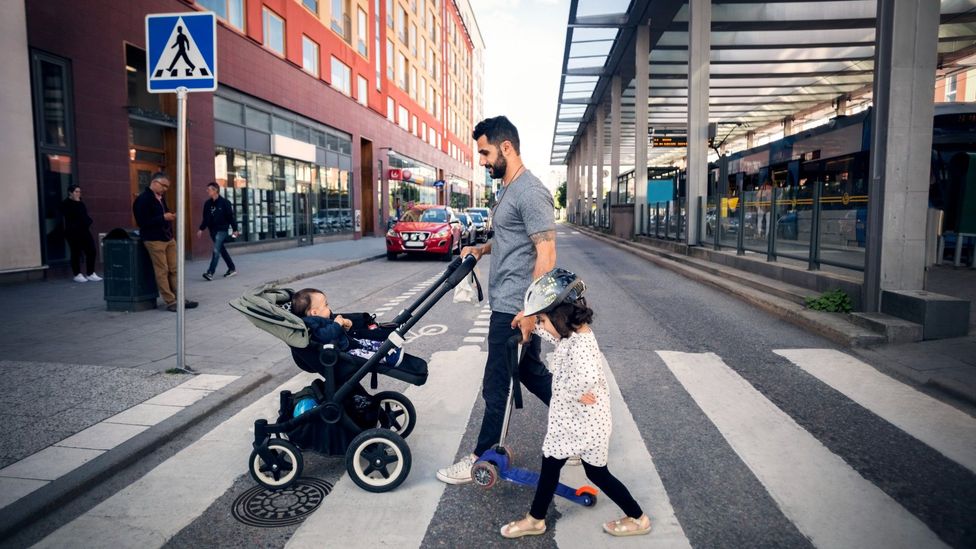In summer 2018, Ricardo Duque was about to begin five months of paternity leave from the architecture firm where he worked in London. But, then, his grandmother in southern Portugal contracted a severe case of pneumonia.
Duque’s wife, who is Indian, had just resumed working at Samsung, after seven months of maternity leave. “I’d barely spent any time alone with our daughter,” the 42-year-old recalls. “But I had no choice. I took her to Portugal, and spent the next few weeks looking after my tiny baby and my grandma, with very little help from anyone else.”
From the moment Duque and his wife discovered they were expecting, he knew that he wanted to take a substantial amount of paternity leave, which his partner endorsed. Despite worrying that he was getting “looks” from colleagues and being “judged by managers” when he informed them of his plan – and even though his leave did not start exactly as envisioned – the experience turned out to be extremely rewarding.
“The time we spent together was invaluable and I wouldn’t change it for the world,” he says. “We now have such a special bond.”
Across the UK, US and many other parts of the world, however, non-birthing parents like Duque who take parental leave are a depressingly small minority. The number of countries where paternity leave is enshrined in law has more than doubled to about 90 in the last 20 years; and globally, at least four out of every 10 organisations are thought to provide paid leave above the statutory minimum. Yet, the proportion of men who take more than a few days off work when their child is born is tiny.
Most cite fears of being discriminated against professionally, missing out on pay rises and promotions, being marginalised or even mocked as reasons for not taking time off. Academics consider these concerns to be the effect of deeply ingrained and highly damaging stereotypes around gender – and suggest that changing this will require significant cultural shifts as well as better institutional provision of paid paternity leave.
Internalised stereotypes
Thekla Morgenroth, a research fellow in Social and Organisational Psychology at the University of Exeter, UK, says that gender stereotypes have persisted, even though gender roles at work have changed substantially in the last few decades, with much higher numbers of women entering and staying in the workforce.
“Women are no longer seen as less competent than men, but women continue to be seen as more communal – warm, nurturing and caring – than men and, in turn, as more suitable for roles that require these attributes such as childcare,” they explain. “Men, on the other hand, continue to be seen as more agentic: decisive, assertive, competitive.”




